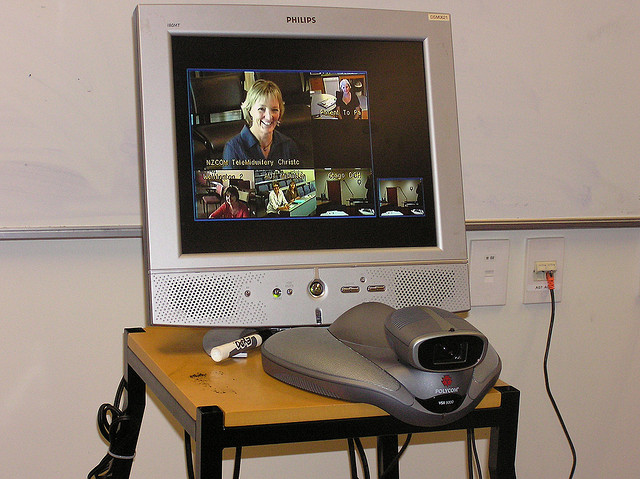In the constantly changing worlds of business and commerce, innovation remains a constant and Omni-potent factor. From the Cloud and sophisticated remote communication techniques to the concept of video conference, even small and independent businesses now have access to advanced technology that enables them to complete with larger corporations. Video conferencing has emerged as a particularly viable tool, as it enables companies to deliver point to point communication across a global pool of employees, clients and industry contacts.
There is an acute and interesting science behind the use of video conferencing, which has become increasingly necessary given the rise of outsourcing and globally active contractors. More specifically, it has been proven that 4 out of the 6 most important attributes for building a business relationship cannot be achieved without in-person or face to face interaction and video conferencing allows international brands to achieve this without being forced to host costly corporeal events in a fixed geographical location.
 With this in mind, it is clear that video conferencing offers small business owners the opportunity to reduce their travel expenses and carbon footprint while also improving efficiency and driving increased workforce collaboration. Consider the following steps towards creating a well-prepared and ultimately successful video conference: –
With this in mind, it is clear that video conferencing offers small business owners the opportunity to reduce their travel expenses and carbon footprint while also improving efficiency and driving increased workforce collaboration. Consider the following steps towards creating a well-prepared and ultimately successful video conference: –
1. Choose a Video Conferencing System
As a starting point, it is important to note that there are two main forms of video conferencing system. These include a dedicated system that incorporates of the necessary components within a single piece of equipment, and other option that enables you to build a desktop program by integrating add-ons into an existing IT set-up. Both of these options require considerable investment, while the associated software can be downloaded online with clear and concise instructions. While both of these options are ideal for larger businesses with significant resources, however, small firms or sole traders may prefer to employ the services of a specialist web conferencing or webinar service to handle the practical requirements.
[youtube https://www.youtube.com/watch?v=MAl3fMldnZQ]
2. Organise Attendees and Create an Agenda
Once the logistical requirements have been taken care of, the next step is to establish an engaging agenda and invite potential attendees. It is important to start with the former, as this will impact on the length, scope and timing of your conference and subsequently determine who you will need to invite. The content and tone of your conference can vary, whether its goal is to celebrate specific achievements or educate employees on company culture. So long as you are clear and firm in your thought process, you can identify a viable guest list before setting a date, establishing a registration system for attendees and issuing formal invites. It is important to follow these steps in a methodical manner, as otherwise your organisational process can break down at any time.
3. Communicate your Message and Theme
Once your agenda is fixed and the invites have been issued, it may be tempting to sit back and wait for the replies to come flooding in. This is a flawed approach, however, as even the most promising and interesting conference will fail to draw a crowd if you do not communicate your message effectively. Not only do you need to articulate the purpose of the conference and its individual elements, but it is also crucial that you sell in a way that engages those who have been invited. Whether you do this through the presence of qualified and exciting guest speakers or the use of technology to create the promise of an interactive conference, you must have a unique hook to capture the attention of guests and ensure their attendance.
Laura is blogger and research from the UK and Shared this article for environmentalleader.com







